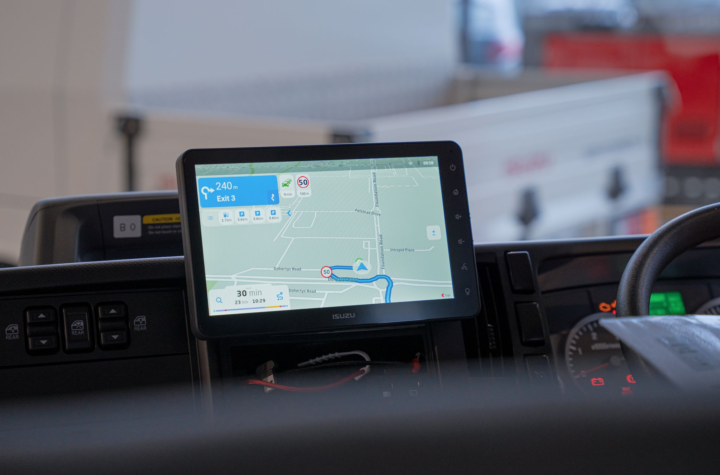
A “powerful and ambitious” vision of “seamless transport” is driving the International Transport Forum (ITF).
The ITF is part of the Organisation for Economic Co-operation and Development (OECD), and is an intergovernmental organization with 53 member countries. It acts as a strategic think tank for transport policy. It introduced the vision of seamless transport at its annual summit, which was held in Leipzig, Germany, in May 2012.
Seamlessness focuses on using resources optimally, according to the ITF. “This involves innovation, for example through convergence of transport infrastructure, operations and systems with the digital sphere, a process that is already changing the way we think about and use transport. Seamless transport requires the connection of traditional transport systems and networks with other infrastructure and services, such as water, energy and telecommunications – all an essential part in today’s society,” says the ITF.
It is accepted that the car or motorbike-only ap¬proach to urban mobility has reached its limits as the costs from congestion, crashes, pollution, and adverse climate change impacts are sapping the vitality of many urban areas in the world.
Providing more seamless transport op¬tions is expected to have positive effects on the daily travel of citizens. However care¬ful overall impact assessment is required to delineate the scope of regional projects and maximize societal benefits. Transpar¬ent methodologies to assess the options and well-defined decision-making processes are important in gaining acceptance for projects that can have significant environmental and distributional impacts. Particular attention is needed to identify fund¬ing mechanisms acceptable to service providers and establish who ultimately pays for investments in infrastructure and services that cross jurisdictions.
Sessions at the three-day ITF Summit focused on developments such as “The Future of Travel: e-Ticketing, Smart Phones, Data Sharing,” which looked at how real-time information and integrated ticketing are changing passenger transport. This session focused on innovation in information technologies which has brought about conspicuous changes in the use of public transport. It is now common to get information on routes, transfers, fares and travel times using smartphones. And people increasingly pay fares on buses or metros not with cash but with electronic cards. These technologies can substantially reduce waiting and boarding times and ensure passengers take optimal routes.
The introduction of information technologies in the transport sector may now trigger new transport services. They generate data that makes it possible to identify where and when the demand for public transport is high, so that operators can provide tailored services to meet demand and better match preferences. Seats in commuter trains can be reserved using smartphones. Public bike-sharing systems make use of smart-phone applications to facilitate access for pedestrians. They are also an extension to using public transport. Travel information can be integrated into shopping, dining and tourism information services.
Another session titled “Urban Connectivity: Improving the Door-to-Door Journey” looked at whether public transport, bicycles, car-sharing and taxis can be better integrated to create urban seamless travel. Every day, people undertake more than 10.5 billion trips in urban areas around the globe – and this number is growing as urban population increases. Managing these trips poses fundamental challenges for both cities and their inhabitants, especially as space devoted to everyday mobility is limited and networks are often crowded. At the same time, mobility is at the core of what makes urban areas dynamic and attractive hubs. Crucially, there is often a mismatch between the way in which citizens approach their urban trips – as a single, door-to-door journey, and the way in which authorities plan, allocate resources to and manage separate transport networks and services. While almost every trip starts and ends with walking, and most trips involve one or several other modes, transport is rarely organized along the lines of one single, seamless, door-to-door transport task.
Freight came under the spotlight in “Rethinking the Last Mile: New Approaches to Urban Logistics”. Good urban logistic systems have an essential role in making cities liveable and sustainable. The overall financial equilibrium is a key issue and often means long-term public investments at the city level. Sharing the cost of these investments sometimes requires contractual agreement between logistic operators, transport providers, retailers and public authorities since there is only limited opportunity for direct charging.
Automotive Industries (AI) asked Stephen Perkins, Head of Transport Research at the International Transport Forum to expand on the ways that seamless transport solutions will help economies and societies across the world.
Perkins: Transport services are only as good as their weakest link. These are often found at interfaces. Customs, immigration, transfer between bus and rail. Relatively small investments in these critical points can often make as much impact on performance of the end-to-end journey as major infrastructure investments. In the current financially constrained world these opportunities to improve services are more important than ever. Trade is one of the keys to producing the growth our economies need to recover from the financial crisis and reducing the costs of trade through more seamless transport has big dividends.
AI: How did this year’s summit help in working towards providing solutions for a future of seamless transportation?
Perkins: It showcased some of the success stories – one example is the Oyster card that allows you to travel anywhere in London on any mode of transport. Another is the consistently high performance of Australian customs services, or the leadership of Germany and others in logistics performance. These focus on seamlessness and assessing transport policies with the whole end-to-end journey perspective firmly in the forefront of decision-makers minds, aiming to spread best practice around our membership.
AI: What are some of the biggest hurdles for countries looking to provide seamless transportation?
Perkins: Negotiating the revenue sharing agreements that make seamless payment systems like the Oyster card possible is far from easy. Governments have a critical role as brokers, and when necessary must impose agreement as a condition for awarding concessions. Coordination between government agencies and different levels of government is also always a challenge. Coordinating customs, security, immigration and transport is still a problem for freight at many borders, resulting in major delays. Coordinating buses, metros and rail services has been solved in many cities by regional transport authorities but in big rapidly growing metropolises, cooperation between the city government and the local governments in the peripheral areas is typically fraught with difficulties.














More Stories
Huntsman Polyurethanes introduces a new range of polyurethane-based products developed for battery enclosures, battery cell potting and underfloor protection
Lakshmi Prasad Bhatta on the quest for zero road deaths
Cybord TCI – The Future of Manufacturing Integrity